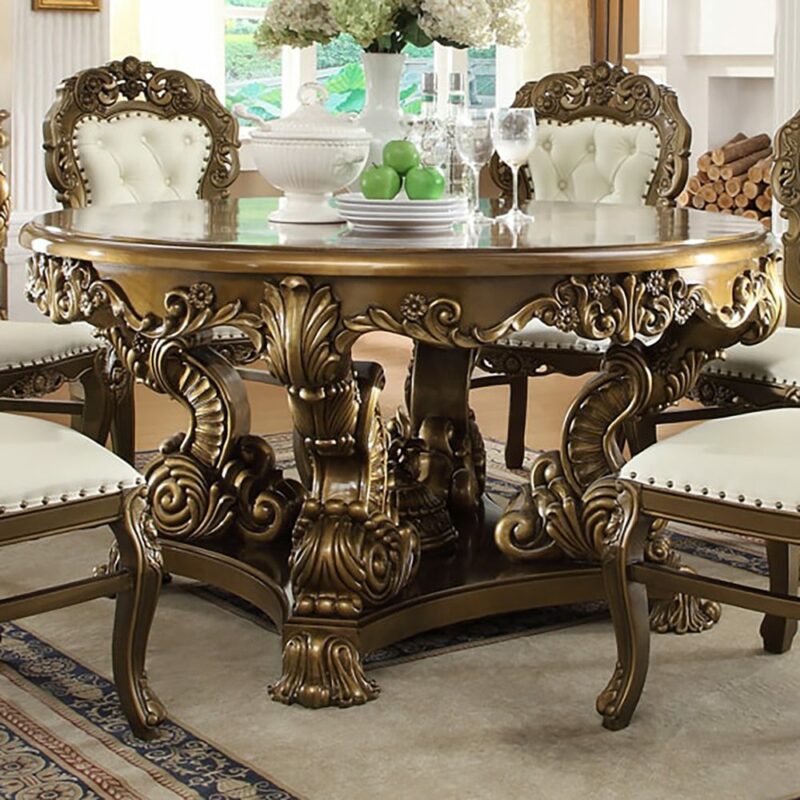The Dining Room Tables Market: Trends, Insights, and Opportunities

Introduction
Dining room tables have long been a centerpiece of home interiors, embodying functionality, aesthetic appeal, and social significance. With evolving lifestyles, housing trends, and design innovations, this segment of the furniture market continues to thrive and transform. This article dives deep into the market trends, consumer behavior, and opportunities surrounding dining room tables, supported by data and actionable insights.
Why Dining Room Tables Matter in Modern Homes
Dining room tables are no longer just functional pieces of furniture; they serve as hubs for family gatherings, workspaces, and design statements. As more people embrace open-concept living, the dining table's role has expanded, reflecting personal style and adapting to multifunctional living needs.
Key Features Driving Popularity
- Versatility: Multifunctional tables that double as workstations are highly sought after.
- Design Variety: Ranging from minimalistic Scandinavian styles to ornate traditional models, dining tables cater to diverse tastes.
- Sustainability: Growing interest in eco-friendly materials and ethical manufacturing processes shapes consumer choices.
Market Overview and Statistics

Size and Growth
The global dining furniture market, including dining tables, is projected to witness significant growth, driven by urbanization, increased disposable incomes, and a surge in home renovation activities. In the U.S., the dining room furniture market's revenue is expected to grow at a CAGR of 5% from 2024 to 2029.
- Imports: The U.S. imported $3.31 billion in wooden kitchen and dining furniture in 2022, with Vietnam, Malaysia, and Canada being major suppliers.
- E-Commerce Dominance: Online sales dominate, offering consumers convenience and competitive pricing.
Consumer Demographics
- Millennials: This segment favors compact, multifunctional furniture suitable for urban apartments.
- Affluent Buyers: Prefer bespoke and luxury dining tables with high-quality materials and craftsmanship.
Emerging Trends in Dining Room Tables
1. Design Innovations
Minimalist, modular, and space-saving designs are rising in popularity. Round and oval-shaped tables are particularly favored in small spaces due to their ability to foster intimacy and save room.
2. Sustainability
- Materials: Eco-conscious consumers demand tables made from reclaimed wood or sustainable alternatives.
- Manufacturing: Brands are adopting greener practices to align with customer values.
3. Technology Integration
Smart furniture trends, including dining tables with embedded charging ports or adjustable height mechanisms, cater to tech-savvy users.
Distribution Channels
The dining room furniture market has seen a shift in purchasing behavior:
- Online Retail: E-commerce is now the fastest-growing channel, with platforms like Wayfair and Amazon leading the way. Features such as virtual room planners make online shopping more interactive.
- Brick-and-Mortar Stores: Department stores and independent retailers remain crucial for customers seeking tactile experiences.
Competitive Landscape
The dining room tables market is highly fragmented, with both large-scale and niche players competing:
- Key Players: IKEA, Ashley Furniture, and Steelcase dominate through affordability and wide product ranges.
- Innovative Entrants: Smaller companies focus on customization and superior customer service, gaining a foothold in niche markets.
Challenges and Opportunities
Challenges
- Raw Material Costs: Fluctuations in wood and metal prices impact production costs.
- Consumer Spending Trends: Economic uncertainties can lead to reduced discretionary spending on furniture.
Opportunities
- Customization: Personalized designs that cater to individual preferences can differentiate brands.
- Global Expansion: Emerging markets, particularly in Asia-Pacific, present growth opportunities driven by increased residential construction and disposable incomes.
Choosing the Perfect Dining Room Table
For consumers, selecting the right dining table involves considering factors like size, material, and design compatibility with existing decor. Brands that simplify this decision-making process through guides and visualization tools are likely to gain consumer trust.
1. The Role of Dining Tables in Small Spaces
With urbanization leading to smaller apartments, dining tables are increasingly designed to be compact and multifunctional. Popular options include extendable tables, foldable models, and wall-mounted designs that maximize utility without occupying too much room. These solutions cater to urban dwellers who seek functional furniture that complements their limited spaces while still accommodating social gatherings or work-from-home needs.
2. Luxury Dining Tables: A Growing Segment
The luxury market for dining tables is gaining traction, especially among affluent buyers seeking unique and bespoke designs. Crafted from high-end materials such as marble, premium hardwoods like teak, or custom metal finishes, these tables emphasize artistry and exclusivity. Brands in this segment often highlight craftsmanship and offer customization options to appeal to discerning tastes.
3. Regional Preferences and Trends
- North America: Emphasis on large, centerpiece tables that align with open-concept layouts.
- Asia-Pacific: Compact and versatile designs dominate, driven by urban housing trends and a younger, tech-savvy demographic.
- Europe: Sustainability and retro-inspired aesthetics are key drivers, with vintage and reclaimed materials being particularly popular.
4. The Impact of Sustainability Certifications
Consumers are increasingly prioritizing dining tables certified by organizations like the Forest Stewardship Council (FSC) or those bearing GREENGUARD labels. These certifications validate eco-friendly practices in sourcing and manufacturing, helping buyers make environmentally responsible choices while boosting brand credibility in a competitive market.
5. Future of Dining Room Tables: Smart Features
The dining table is evolving with the integration of smart technology. Features like built-in wireless charging pads, height-adjustable mechanisms, and smart lighting controls are becoming more prevalent. These innovations not only appeal to tech-oriented buyers but also cater to the multifunctional demands of modern living spaces, redefining how dining tables fit into everyday life.
6. Impact of Customization on Dining Room Tables
Customization is becoming a powerful trend in the dining room tables market. Consumers are increasingly seeking furniture that reflects their personal style and suits their unique living spaces. From choosing specific materials, finishes, and colors to having custom dimensions or additional features, dining tables are no longer one-size-fits-all. Brands that offer tailored solutions or modular designs are capitalizing on this growing demand, allowing consumers to design tables that fit both their aesthetic preferences and practical needs.
7. The Role of Dining Room Tables in Social and Family Interactions
Dining room tables continue to hold immense social value in modern homes. They act as gathering points for family meals, celebrations, and social interactions. As more people embrace a slower pace of life, dining tables are seen not just as a functional piece, but as a symbol of connection and shared moments. In this context, larger tables or those designed to encourage conversation (such as round or oval shapes) are gaining popularity, as they enhance the communal experience within the home. This shift in how people perceive and use dining tables influences market demand, with consumers seeking tables that support family togetherness and entertainment.
Conclusion
The dining room tables market is at an exciting juncture, blending tradition with innovation to meet modern needs. By embracing trends like sustainability, multifunctionality, and technological integration, manufacturers and retailers can stay ahead of the curve. For consumers, this means a broader spectrum of choices that balance style, utility, and ethical values.
Whether you’re seeking a rustic centerpiece or a sleek modern design, the perfect dining room table awaits—blurring the line between utility and artistry.